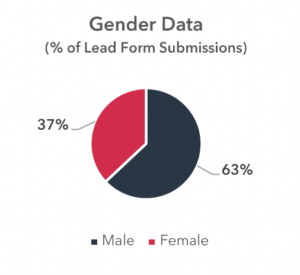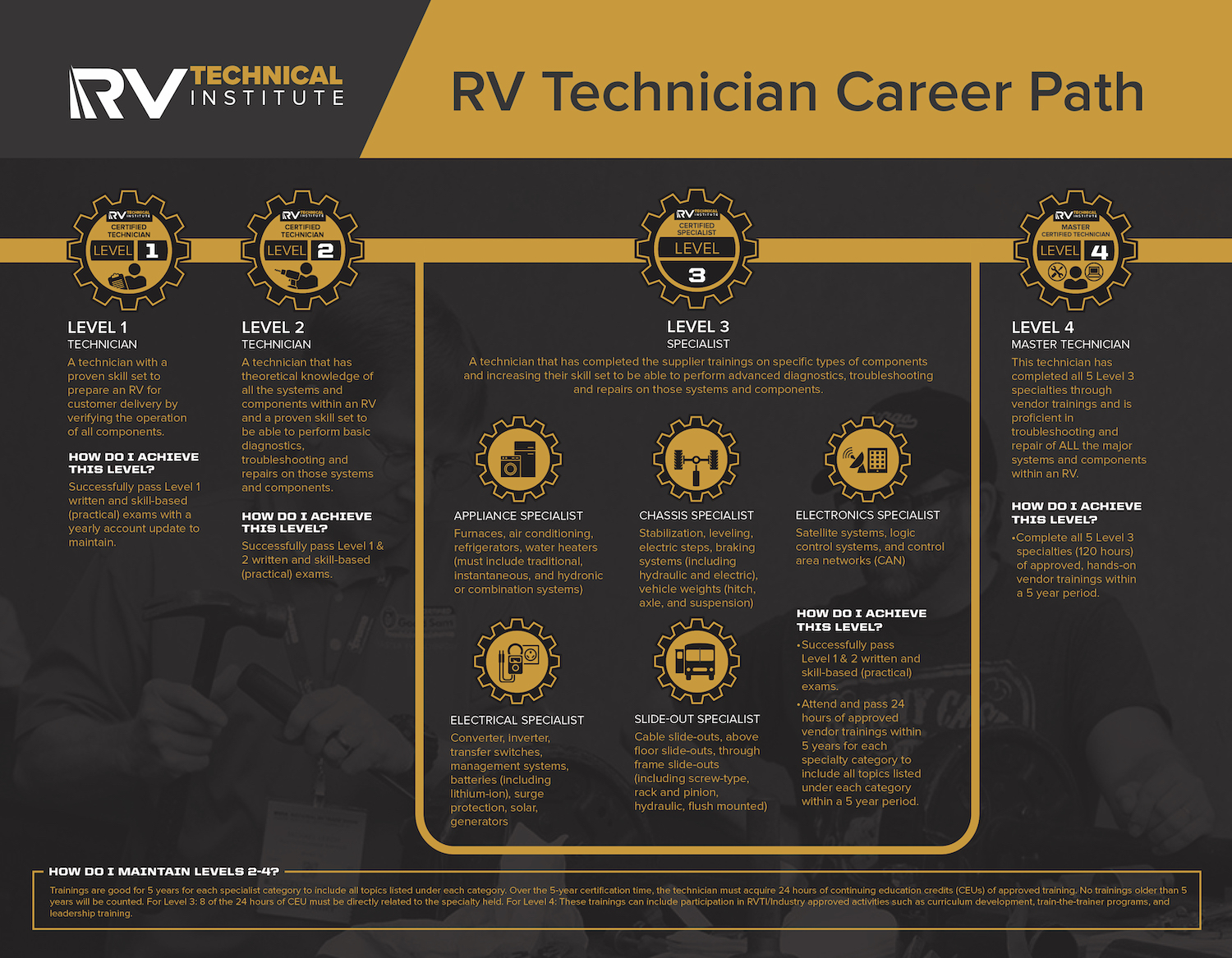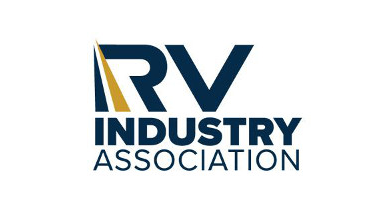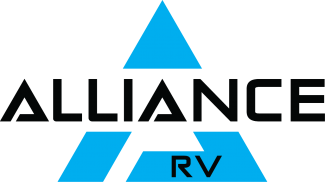Train, Certify & Recruit: Check, Check & Check
RV Technical Institute finds success in offering training to future RV technicians in multiple formats that fit students’ needs.

Imagine being able to jumpstart a career with an average median salary of $42,000 in 120 days or less.
That’s what training to be a technician with the RV Training Institute (RVTI) helps hundreds of people do across the United States. And its efforts to train even more technicians have only ramped up in the last couple of years.
“RVTI was created by the industry as a nonprofit with three priorities: train, certify and recruit for the benefit of the consumer having better service and a better overall experience. That’s our mission,” says Curt Hemmeler, RVTI executive director. “From a recruitment standpoint, that has been going very, very well. June 1 marked our first full year of doing recruitment.”
Hemmeler says the recruitment efforts were initially delayed because of the COVID-19 pandemic. But, thanks to the teams overseen by Tracy Anglemeyer, director of recruitment, and Sharonne Lee, vice president of education and operations, RVTI has more than 14,000 people entered into their learning management system.
Training is subsidized by investments from the RVTI board and the RV Industry Association and RV Dealers Association board and takes place in a number of places: prisons, high schools, with dealer partners, individuals and more. Many are trained to be mobile technicians, Hemmeler says, and some RV consumers take on the training courses because they want more knowledge to take care of their own rig.
 Hemmeler, who spoke with RV PRO from the American School Counselor Association convention in Atlanta, said events like the one he was attending are a big part of RVTI’s outreach.
Hemmeler, who spoke with RV PRO from the American School Counselor Association convention in Atlanta, said events like the one he was attending are a big part of RVTI’s outreach.
“It’s with the purpose of educating the school counselors, who then will go back and talk to their students across the country about the idea of pursuing a technician career field in the RV industry as a potential alternative to the traditional route,” Hemmeler says.
Thanks to the RVTI’s increased activity and interest in the program, four new team members will be added to the institute staff by the end of the year. Tyson Watkins came on as a new trainer in May and an administrative assistant also recently came onboard.
Lee said they expect to add a fourth person later this fall.
The recruitment team and education team are separate by design, Hemmeler says – one to handle the intake of students and one to coordinate with them once they are enrolled.
“Tracy is head of all recruitment efforts building relationships, expanding, adding growth, adding scale,” he says. “Justin Rickett on her team was added because the greatest portion of our business is our authorized learning partners, which can be any entity who wants to teach the curriculum to folks in their business. So, it might be a dealership group, it might be a community college. We set them up as learning partners and give them the curriculum.
“Justin was added as a manager, authorized learning partner, to oversee building and continuing those account relationships.”
How Training Works
While completing the training can take up to 120 days, Lee explains the actual time frame is up to the student. There are five delivery methods to choose from, depending on the student’s learning style. In-person live training at RVTI headquarters in Elkhart, Indiana, can take four weeks to complete level 1 and level 2. The in-person training schedule is available at rvti.org/get-trained/person-training.
Online learning is available for a full year for $600 and students work at their own pace. According to the RVTI website, the course blends video, quizzes and interactive content.
Lee explains that it’s often helpful for someone who wants to be a technician to get the level 1 training, then go get hired and continue on to level 2 training after that.
“You just need that kind of work experience,” she says.
At first, recruitment efforts were successful with baby boomers or retirees who were bored and wanted to pick up RV technician work as a part-time job.
“Then that kind of flipped into ‘I’m changing careers,” Anglemeyer says. “We are getting an influx of changing careers. And then we have the new Zs [Gen Z] coming through that are coming right out of high school that are getting into more skilled trades again.
“It’s a big mix, it really is. That’s why we work with all different aspects of the industry inside and then also outside and bring [people] in.”
Hemmeler says their new are really broken down fairly evenly right now – one-third baby boomers, one-third people entering new careers, and one-third Gen Z.
“It’s becoming more cool to get back into the trades,” he says. “The trades became, you know, they were kind of looked down upon…now it’s becoming very ‘in’ again because that’s where all the jobs are. So our program fits very nicely in that.”
Campgrounds are another source of new trainees that is on the rise.
“We started about a year ago through some involvement with RVIA getting involved with campgrounds. [Now] one out of every 10 students that come through Elkhart [in-person training] will come from a campground. They’ve realized that having an on-site person can be a benefit – it can be a revenue generator and a value add to the campground. And so we’re very involved with a lot of big state associations.”
As for how the different generations are learning and what mode they’re choosing to do their training in, Lee says the millennials do tend to choose online, and Gen Z is used to learning online, but they still want that hands-on training. Gen Z seems to enjoy the skilled trades like Gen X, but they want the life balance that millennials crave.
Hemmeler points out that what typically sways how someone completes training is situational, not preferential. If someone can do it in-person and take four weeks away to do that, that’s a great choice. Others may need to do it online at night or on weekends while working their current job.
“In the ideal world of education, hands on is still face-to-face, one-on-one mentoring – that’s utopia. The reality is everyone’s too busy and we also have technology. Some of it’s learning style, but I think most of it’s driven by what’s your current situation. Because I think most people would like to do face-to-face if they had nothing else to do,” he says.
The online nature also helps RVTI disseminate updates to its curriculum regularly. Anglemeyer says the most recent update will launch before this issue of RV PRO comes out, something the institute does on a three- to five-year basis.




